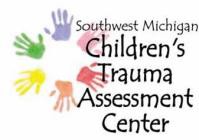Trauma-Informed System Change Instrument (TISCI) Questionnaire (all site staff)
Head Start Evaluation of a Trauma-Informed Care Program
Instrument 1 TISCI _11.12.21
Trauma-Informed System Change Instrument (TISCI) Questionnaire (all site staff)
OMB: 0970-0590

OMB
Control #: XXXX-XXXX
Trauma Informed System Change Instrument
PAPERWORK REDUCTION ACT OF 1995 (Pub. L. 104-13) STATEMENT OF PUBLIC BURDEN
The purpose of this information collection is to identify teacher practices for supporting children’s social-emotional development and to identify training and implementation factors that may enhance these practices. Public reporting burden for this collection of information is estimated to average 10 minutes per respondent, including the time for reviewing instructions, gathering and maintaining the data needed, and reviewing the collection of information. This is a voluntary collection of information. Additionally, an agency may not conduct or sponsor, and a person is not required to respond to, a collection of information subject to the requirements of the Paperwork Reduction Act of 1995, unless it displays a currently valid OMB control number. The OMB number for this information collection is OMB Control #: XXXX-XXXX and it expires on [DATE]. If you have any comments on this collection of information, please contact [NAME AND CONTACT INFORMATION].
As part of the evaluation of this project, we are tracking system change at an individual teacher level and at an organizational level. Please complete the following to help us understand your perception of change needed in these areas.
Organizational Change Self-Evaluation – The Current System
Rate the following statements regarding your Center as it currently operates.
-
Item Number
Not at All True for My
Center
A Little True for My Center
Somewhat True for My Center
Mostly True for My
Center
Completely True for My Center
1.
Written policy is established committing to trauma informed practices
1
2
3
4
5
2.
The Center has a formal system for
reviewing whether staff are using trauma informed practice
1
2
3
4
5
3.
There is system of communication in place with other organizations working with the child for making trauma informed decisions about the child or family
1
2
3
4
5
4.
There are structures in place to support consistent trauma informed responses to children and families across roles within the Center
1
2
3
4
5
5.
Families and children are given systematic opportunities to voice needs, concerns, and experiences
1
2
3
4
5
6.
The Center has a system in place to develop/sustain common trauma informed goals with other agencies
1
2
3
4
5
7.
Understanding of impact of trauma is incorporated into daily decision-
making practice at my Center
1
2
3
4
5
8.
Supervision at my Center includes ways to manage personal and professional stress
1
2
3
4
5
9.
When addressing a child’s behavior we are encouraged to consider the context and contributors to the behavior, particularly the role of stress.
1
2
3
4
5
10.
Staff receive supervision from trauma
informed supervisor
1
2
3
4
5
11.
Timely trauma informed assessment is available and accessible to children
served by my Center
1
2
3
4
5
12.
A continuum of trauma informed intervention is available for children
served by my Center.
1
2
3
4
5
13.
My Center addresses the unique emotional safety needs of each child.
1
2
3
4
5
Rate the following regarding your current individual practice from a trauma informed perspective.
-
Not at all
True for Me
A Little
True for Me
Somewhat
True for Me
Mostly
True for Me
Completely True for Me
14.
I have a clear understanding of what
trauma informed practice means in my professional role.
1
2
3
4
5
15.
I feel favorable in trying a new trauma informed intervention with
children and families.
1
2
3
4
5
16.
I feel equipped to help children make meaning of their trauma history and current experiences from a trauma
perspective.
1
2
3
4
5
17.
In practice, I am utilizing what I believe to be trauma informed interactions with children and
families.
1
2
3
4
5
18.
I am willing to try a new form of intervention even if I have to follow a
manual or protocol.
1
2
3
4
5
19.
I am willing to use trauma informed interventions that researchers say are
effective.
1
2
3
4
5

Name Agency Affiliation/Role

Thank you for your time and participation.
Reference: Richardson, M. M., Coryn, C. L. S., Henry, J., Black-Pond, C., & Unrau, Y. (2012). Development and Evaluation of the Trauma-Informed System Change Instrument: Factorial Validity and Implications for Use. Child Adolescent Social Work Journal, 29, 167-184. https://doi.org/10.1007/s10560-012-0259-z
Note: Items 18 and 19 were modified with permission from the Evidence-Based Practice Attitude Scale (EBPAS - Aarons, G.A., 2004)
| File Type | application/vnd.openxmlformats-officedocument.wordprocessingml.document |
| Author | RichardsonM |
| File Modified | 0000-00-00 |
| File Created | 2021-12-15 |
© 2025 OMB.report | Privacy Policy